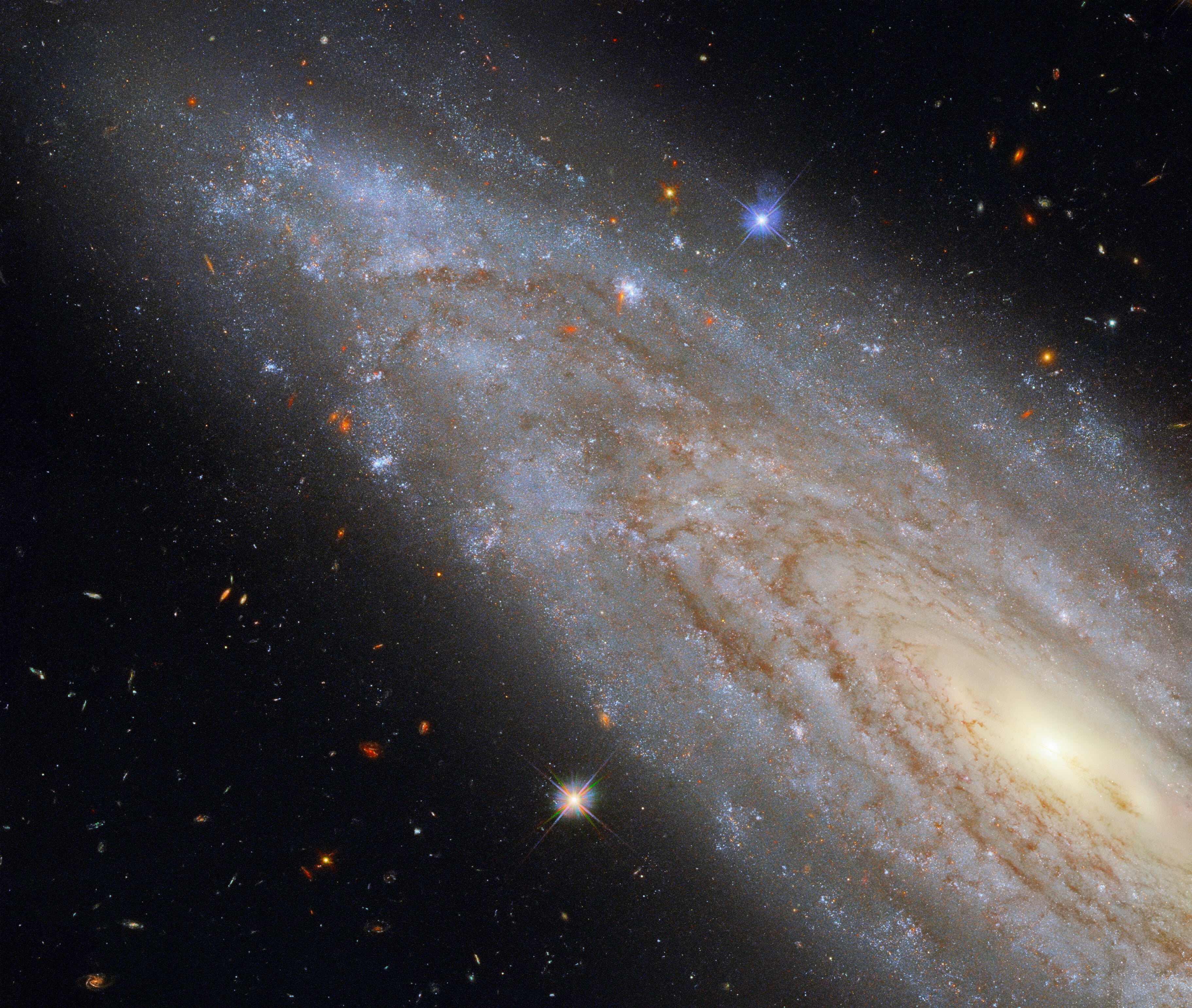Nasa’s Hubble Space Telescope captures far-off galaxy with a ‘fascinating secret hiding in plain sight’
The black hole at the centre of the galaxy releases huge amounts of heat and light

Your support helps us to tell the story
From reproductive rights to climate change to Big Tech, The Independent is on the ground when the story is developing. Whether it's investigating the financials of Elon Musk's pro-Trump PAC or producing our latest documentary, 'The A Word', which shines a light on the American women fighting for reproductive rights, we know how important it is to parse out the facts from the messaging.
At such a critical moment in US history, we need reporters on the ground. Your donation allows us to keep sending journalists to speak to both sides of the story.
The Independent is trusted by Americans across the entire political spectrum. And unlike many other quality news outlets, we choose not to lock Americans out of our reporting and analysis with paywalls. We believe quality journalism should be available to everyone, paid for by those who can afford it.
Your support makes all the difference.The Hubble Space Telescope has captured an image of a spiral galaxy that is hiding a supermassive black hole at its centre.
Galaxy NGC 3254 is a ‘Seyfert galaxy’, a collection of planets and stars defined by their extremely active centres, located approximately 118 million light-years from Earth.
The black hole at its core, with its huge gravitational power, can pull gas, dust, stars and planets, around in space – captured by Hubble using both visible and infrared light.
While one might assume that black holes, with their vast force, would simply devour everything that came close to it, the accretion of material releases huge amounts of radiation, releasing heat and light.
Scientists put together this image using a composite of light from different parts of the spectrum, which is partly what stops the bright core from overpowering the surrounding cosmos. Using Hubble’s Wide Field Camera 3 (WFC3), scientists can capture our universe in ultraviolet, visible, and near-infrared light.
This galactic phenomenon is relatively uncommon, though, as Seyfert galaxies only account for ten per cent of all galaxies in the known universe.
Hubble’s space telescope is not without its own drama, however. Recently, Nasa had to restart the spacecraft after a computer glitch put it, and all its scientific instruments, into safe mode.
The main computer stopped receiving the “keep-alive” signal, a standard ‘handshake’ (a way of establishing a connection) between the payload and the spacecraft’s main computers. It is set to be soon replaced by the James Webb Space Telescope, which Nasa will send into orbit on 31 October aboard an Ariane 5 rocket.
This will give scientists the opportunity to look back 150 million to 1 billion years after time began – something that has been previously inaccessible to them with Hubble.
Join our commenting forum
Join thought-provoking conversations, follow other Independent readers and see their replies
Comments